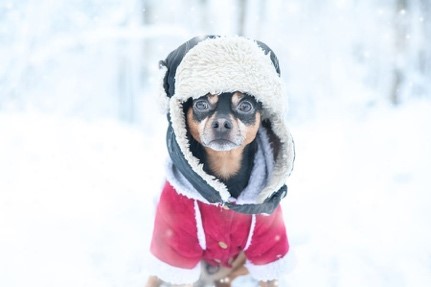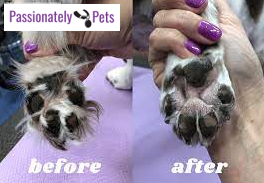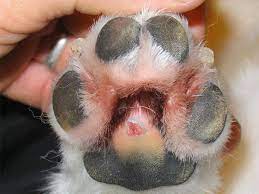
December is a wonderful time of year! The holidays are upon us, friends and family come together to spend time with each other, and of course the beauty of the winter chill. The change in season can be seen in everything around us, including what kind of care we must provide our pets during the upcoming colder weather. Here are some tips that will keep your pets healthy and safe this winter.
Dress for the Weather

Many believe that cats and dogs are resistant to the cold due to their fur. However, this could not be farther than the truth. Similar to humans, animals are susceptible to frostbite and hypothermia so their time outdoors needs to be limited, they should be dressed appropriately for the weather and they need to be protected from direct contact with the elements while outside.

Dogs with short hair and thinner coats will most likely need an extra layer to help keep them warm while on walks so investing in a coat or sweater will be help them say comfortable. Booties can create a barrier between your pet and the cold ground, but are not the easiest thing to get your pet used to wearing.
And remember to keep your time outside short. Instead of a long walk, play mental enrichment games indoors to tire your pup and then settle in to a cozy cuddle session on the couch.
Protect Those Paws

It is crucial to keep an eye on your pet’s paws in the cold. Look for irritation, cracks or bleeding which can be caused by too much direct contact with cold surfaces, sharp ice and irritants accumulating in between their toes like snow, ice and toxic ice melting chemicals. To help minimize injuries and buildup, keep the fur between their toes and around their paw pads trim. Another great idea is to consider boots, but as mentioned earlier, some training may be required to get your pet comfortable wearing them. If they do not wish to wear protective gear, we recommend applying a protective paw balm before walks and to wipe down their paws, legs and underbelly after each trip outside to remove any chemicals they may have come into contact with.
And it is a good idea to only use pet safe deicing product on your own property and ask your friends and family to do the same. This will help protect your pets and others in your area. Remember to store these chemicals in a safe place out of reach of your pets. Accidents do happen, so if any spills it is important to clean these messes quickly!
Know the Signs
Even when we shorten the time spent outside, hypothermia and frostbite are still possible. If you notice your pet beginning to whine, shiver, slow down, stop moving, seem weak or start looking for a warm place to go, it is extra important to get your pet inside and warm quickly because they may be hypothermic. If you suspect your dog may be suffering from hypothermia with a low core temperature, bring your dog somewhere warm if possible and contact your vet immediately. A dog with hypothermia will be treated until they reach a normal body temperature. Minimize your dog’s movement while they are being warmed up.
Frostbite is more difficult to discover and may not be noticed until after the damage is already done. It can occur in as little as 15 minutes, or it can take several hours or even days to develop. Frostbite is tissue damage caused by extreme cold. It happens when blood flow to the affected area is significantly decreased, and it results in injuries similar to thermal burns.

Frostbite usually occurs when the body’s natural response to low temperature causes blood flow to be redirected away from the extremities and toward the center of the body. This process protects vital organs, such as the heart, when the body is in danger of becoming too cold. However, it leaves the extremities, which are less critical to survival, unprotected by the oxygenation and warmth provided by blood.
The most commonly affected areas of the body are those furthest from the heart including: ear tips, tail, toes, nose and scrotum. These regions are also more exposed to wind and moisture, which can contribute to and intensify the development of frostbite.
Pets going through frostbite will experience discoloration of the affected areas, usually bluish, grey, or pale in the skin. The affected areas will most likely be cold and/or brittle to the touch, causing pain to the affected areas. Swelling, blisters, and ulcers may also appear on the affected areas. The last thing you will see is the affected areas will become black and have dead skin.
If you suspect that your dog has frostbite, you should immediately take them to the vet. You should keep your dog warm with the car heater and/or a warm towel. You can gently warm the affected areas with slightly warm (not hot) water or a warm moist towel. It is important not to rub the skin or attempt to warm it with direct heat such as a hairdryer or heating pad, because this can worsen the tissue damage.
Cold Weather Joints

Be extra mindful during winter of extra aches, pains and discomfort your pet may be experiencing. Cold weather can cause arthritis and other medical conditions to worsen, resulting in the need for extra pain management. All pets have their limits and knowing those limits will aide in keeping them safe and healthy. For example, many pets have difficulty walking in the snow and ice. It is important to adjust your routine to help minimize any dangers and possible risks.
Find Their Way Home
Winter is a great time to ensure all collar and microchip information are up to date. If your pet gets lost in colder months, familiar scents may become masked by frost, snow and ice, making it difficult for them to find their way home on their own.

Just as us humans may find cold weather uncomfortable, so do our pets. The winter season is just as beautiful as it is dangerous for everyone. But with the proper steps, care, and knowledge you can keep your pets safe and healthy. What changes do you make to your usual routine to keep your pets safe during the winter season?




Leave a Reply